_The Essential Guide to Building the Ultimate Back
Being a strength fanatic, I understand that true strength is found in things unseen. Strength of character far outweighs any bench press PR. But we aren't getting into that today. We are, however, talking about other kinds of strength "less seen". Everybody wants to look good in the mirror, and rightfully so. So we build the chesticles and strive for washboard abs. What many people fail to realize is that real physical strength is found behind the scenes. When combined with adequate mobility, the muscles of the back and the muscles found deep in the trunk are the keys to insane power, strength and longevity. It has been said that you are only as young as your spine is flexible. So let's get strong and pliable, like iron cables erecting cities of granite muscle. 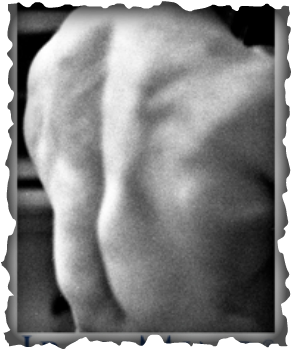
Acquiring massive back strength will take a long time, and will require years of hard work. During this time of intense training, if you fail to balance your heavy back lifting with body weight drills, efficient mobility exercises, and full body exercises, you will surely be temporarily side lined, if not permanently forced to cease training due to chronic back pain from poor movement and musculature imbalances. That's not good, because no one ever achieved their goals by quitting, voluntarily or otherwise.
Having a really big, strong back does not guarantee that you will not have back pain or suffer from other nagging issues. In some cases, a super strong back can actually exasperate the problem. If certain parts of your body are much stronger in relation to other parts, you will be imbalanced and your system will be in a constant struggle for dominance. The stronger muscles win and pull the antagonist weaker muscles all out of whack and usually create some sort of poor posture and nasty alignment issue. What needs to be done to assure a safe, comfortable and effective journey of super back strength training is having a balanced approach of strength training in conjunction with flexibility and mobility work. Regardless if your lifestyle consists of sitting at a computer chair for 10 hours a day or bending over to pull a loaded barbell from the floor like you're trying to rip the head off a God damn lion, these techniques I'm about to address will insure that your back will feel better, you will perform better, and your life will less likely be derailed from tightness, pain and discomfort.
Never underestimate the value of a few minutes of basic stretching. If you're too busy to get down and stretch yourself out for a few minutes a day, then you're most likely just going to have pain forever because you refuse to take action and be accountable for your own destruction. Below is a video of some basic stretches to get your back and all of your surrounding muscles mobile and moving well. Remember, your entire body is interconnected and the source of the pain is rarely where you feel the pain. It is usually the manifestation of some other deep rooted problem, as simple as sitting on a wallet under one cheek all day, wearing certain kinds of footwear, or even having one leg a half inch shorter than the other, causing bad alignment. Both of which we don't really see or think about. Also, tightness of one muscle group can cause pain above or below the restricted area from overcompensation. If everything is stretched out effectively mobilized, there will be less of a battle for muscular dominance, and thus, less pain and more pleasure. Some basic static stretches include, but are not limited to: -lying hamstrings stretch -psoas stretch -lumbar rotation -prone press up/ hang -iliotibial band stretch -it should be noted that foam rolling and various other forms of self myofascial release and massage therapy can have huge benefits with muscle relaxation and pliability 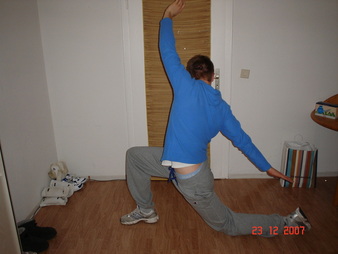
Once you're stretched out and feeling good and able to hold better positions, we must apply this new found range of motion by always maintaining good postural alignment. If you have poor lifting technique or regularly find yourself slouching throughout the day, there's a good chance that your training regimen could make your issues even worse. Maintaining good posture means your body will function more efficiently, which means you'll be able to lift more weight and get stronger muscles, among other things. There are a few things to consider to keep your alignment in check.
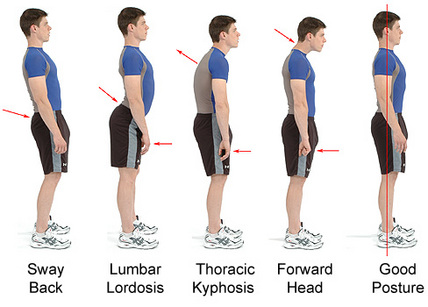
Try to keep your head in a neutral position as often as possible. I have a friend who developed serious pain and requires regular treatment due to holding a phone to her ear with her shoulder for hours a day at work. Your ear, shoulder and hip bone should be stacked over one another in the frontal plane. Your head should not tilt forward and your shoulders should not round forward and sag. This should be obvious, but its amazing how many people you see walking around looking at the ground with their shoulders collapsing forward. The more time you spend staring at your computers and smart phones, the more likely you are to develop back pain due to poor alignment. Also, when performing heavy exercise in an unsupported position, such as a deadlift or clean, activate the deep muscles of the trunk by drawing the belly button towards the spine. 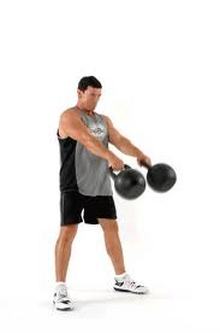
Now we need to learn how to properly train for a strong back. This is best done by performing compound joint movements that integrate the whole body, keeping the musculature in balance. Basic bodyweight exercises are something almost anybody can do virtually anywhere, so there are few excuses to not perform them. Kettlebell and sandbag exercises require minimal space and a little investment, but are invaluable and arguably superior exercise tools, depending on which coach you listen to. Barbell training has been my favorite method for quite some time, but I do not entertain the thought of training with only one tool vs another. I have the choice to train with multiple tools, therefore I will continue to do so on a regular basis. Lots of people ask the question, "If you could only do this, or only use that, what would it be?" I say screw that noise. Maybe for a brief period of time I will choose one tool over another, but as a guy who is interested in strength and quality of life, I will use the right tool for the job, or make adjustments and adapt as necessary. And if things aren't perfect, I'll keep my mouth shut and make the best out of the current situation, and continue getting stronger with a minimalist approach. No matter what happens, I'll always have my body and my mind. You can take my barbell, but you can't take my creativity.
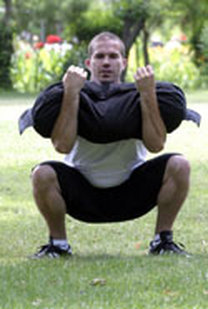
Specific exercises that should be used to strengthen the back, the trunk, and surrounding musculature are deadlift variations, squat variations, swings, cleans, snatches, row variations like one and two arm bent over row, renegade rows and seated rows, supine bodyweight rows, pull ups, extensions, bodyweight levers and plank holds, and sprints. Carries are an excellent way to building trunk strength and stability, they are fun and the options are endless. You could carry a sandbag in front of you, hold a kettlebell or two overhead, at your shoulders, or by your sides as in a farmers carry. One arm variations are great for stability and imbalances. Also, various pressing movements to balance the anterior muscles with the posterior is critical. Isolation movements do little to prevent injury or build muscle and are rarely, if ever, performed in our daily lives. So I wouldn't waste too much time or energy doing any.
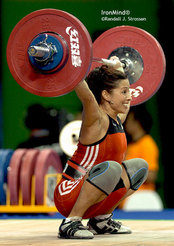
Some rules to consider when organizing your workouts are to perform the fastest, most technical movements with the greatest range of motion early in your training, while you are freshest, eg. snatches before deadlifts, and cleans before squats. If mixing bodyweight exercises with weight training, perform the exercises with an external load first, before the bodyweight training, eg. bent over rows before pull ups. Novice trainers should never pre-exhaust their muscles before compound exercises because it will usually break down technique and make the exercise potentially injurious, eg. hanging leg raises before squats could cause trunk fatigue and rounding of the spine, NOT GOOD under a load.

When selecting exercises you must focus on a balanced program. Last year I had severe back pain temporarily and it took a while to find the culprit. Thinking about it now it is obvious. I was doing a training program which consisted of high volume squatting with heavy weight. I got up to 368 lbs for 20 reps at a bodyweight of 198. I made it a goal to do 20 reps with double my bodyweight, or 405 lbs. But the pain and intensity was so bad that I had to derail my training and I haven't yet achieved the goal I set out for, due to other more urgent training needs. The problem wasn't necessarily from squatting, as I already mentioned squatting is a great exercise, arguably the best exercise actually. The problem was that it was so hard to perform just one set of high rep squats at that level of intensity that it left me all but unable to effectively perform enough supplemental exercises to balance the work I was getting from squatting. Thus I developed tightness in some areas and weakness in others in relation to the strength that was gained from squatting. Had I continued to perform double kettlebell swings, deadlifts, cleans, rows and other bodyweight drills, and not neglected my mobility exercises, I know I wouldn't have been forced to take a step back from my goal. But, it was a lesson learned and with the knowledge I gained through the experience I am sure I will be successful in the future.
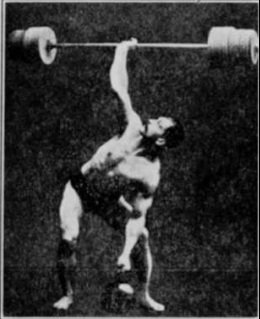
Core conditioning is imperative, and consists of more than training the abs. The core involves all the muscles of the trunk. I use the terms trunk and core interchangeably, and couldn't care less of buzz words or what its called in the magazines this month. Like I stated above, if you train one side of the core musculature and neglect the other, you will fail to build a functional, balanced trunk. Therefore, we need to spend more time on the muscles that we don't see as opposed to the muscles that are staring at us in the mirror. Remember, the trunk of the tree supports the branches, and there is no front or back of a tree, it's just a tree trunk all around. Our trunk serves the same purpose to our extremities. Our arms and legs can only get as strong as our trunk will support. So, whether you want bigger more jacked up guns, a faster 40 time, or simply a more comfortable morning, start with your trunk, as the core serves as a foundation for the extremities. Keep in mind the primary function of the trunk is to stabilize the spine, so the majority of your core exercises could consist of holds and positions that prevent the spine from moving.
If you want to get stronger and keep performing at a high level, or just start feeling better, you must take a balanced approach to strength training as well as flexibility and mobility training. Pay particular attention to the hamstrings, hip flexors and the muscles that rotate the trunk. Maintain good postural alignment in the gym and in your daily life, at all times. Some say the best back exercise is sitting with perfect posture for long periods of time, try it. Train your body as one unit, not a collection of individual parts. Don't bother doing crunches on the floor, train smart with more functional core exercises. Never round your back when lifting weights. Train for balance and don't neglect your "unseen" muscles. 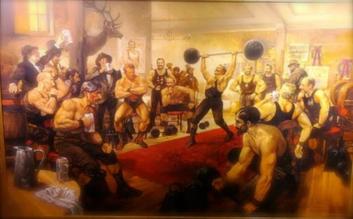
Be smart with your training and if you're interested in exactly how we train our athletes at TSS, want to learn better lifting technique, or are interested in general athletic conditioning, be sure to get involved with our private membership area and receive detailed programming, tutorials and Q&A's, additional articles, blog posts, private forum and more for only $12.95 a month.
Check out some of our awesome strength & conditioning products and find which plan is best for your goal and lifestyle. Thanks for reading, now get working on that massive, functional back! |
|
Home | Blog | Forum | Articles | Products | Testimonials | Membership | Contact Us
Copyright - The Strength Shop
